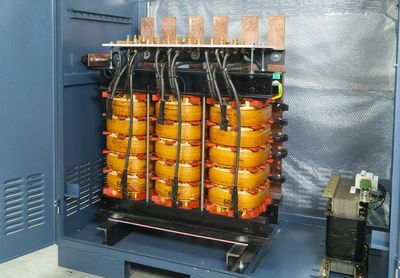Swire Cold Storage optimises voltage to improve efficiency
Thursday, 19 September, 2013
Swire Cold Storage’s Western Australian facility handles a variety of frozen foods including vegetables and seafood. It has 15,000 pallet positions, includes blast freezers with up to 144-tonne capacity and has a capacity of 263,346 m3.
The cold-chain logistics service provider is committed to improving energy efficiency across all sites in all states and is addressing the business challenge of the rising cost of electricity to its operating costs.
The key issue facing Australia’s largest cold-chain logistics service provider was how to squeeze more efficiency and cost savings from its already efficient site at Welshpool industrial district. The energy-efficiency initiatives already installed at the site included a SCADA energy management system with maximum demand control on the refrigeration plant, variable speed drives on condenser and fan motors, air defrost systems on evaporator alcove units, and technology to minimise air/heat infiltration to refrigerated areas.
Swire Cold Storage considered the benefits of Powerstar voltage optimisation at the site, being told it could provide significant energy savings. This solution was viewed favourably because Swire’s Laverton site in Melbourne’s west was achieving a 13% saving in energy consumption after it successfully installed a Powerstar voltage optimisation system.
Voltage optimisation has a significant impact on the amount of energy used because it brings the voltage supplied by the grid in line with what is actually required. Australia has a particular problem with overvoltage and voltage optimisation is emerging as a solution that ticks lots of boxes, including, importantly, meeting CO2 reductions. The statutory electricity supply range for Australia is 230 V +10% to -6%, which means that electricity suppliers are required to provide a voltage level that is between 253 and 216 V. Therefore, the supplier will distribute electricity at 253 V and the voltage decreases over distance. On average, is it received from the grid at 242 V.
Given that most electrical equipment manufactured for Australia is designed to work most efficiently at 220 to 230 V, any incoming power that is higher than this level is wasted energy and means companies are paying for power that is not required and not used. Voltage optimisation works best on inductive loads - motors and lighting for example - and significant savings can be achieved on motors in particular, especially if these are not loaded at 100% of their capacity for 100% of the time.

A Powerstar voltage optimisation unit is a patented triple wound transformer that is designed to correct the overvoltage by bringing it in line with the actual needs of the equipment on site. The system is said to effectively reduce the voltage to an optimum level whereby all the equipment operates correctly but consumes less power in the process. In addition, the Powerstar unit also offers improvement in power quality by balancing phase voltages, cancelling damaging harmonics and transients from the electricity supply and reducing the reactive power, hence improving power factor.
Overvoltage means that energy consumption is not only higher but, as a result, the life span of equipment is shortened. Installing a Powerstar voltage optimisation unit is said to lead to reduced maintenance costs as less demand is placed on electrical equipment.
At Swire’s Welshpool location, during the investigation period, a full site survey was first performed to determine the exact electrical loading characteristics of the site equipment. Voltage measurements were taken, capturing maximum, minimum and average values every two minutes for a period of one week. These investigations ascertained the average voltage supply to Welshpool was 247 V, with a peak at 265 V and minimum at 242 V.
Two Powerstar voltage optimisation units were installed at the incoming supply to the site and were able to optimise the existing main circuit breaker for protection of the units. All the preparation work was performed without any interruption to the site and the final connections made during a shutdown of the plant over a few hours on a Sunday.
The proposal for the Welshpool facility was to install two Powerstar units with a typical 20 V reduction (9.3%), maintaining constant average voltage at 224 V, and included guaranteed savings of 8% of the total site’s kilowatt-hours. This was implemented and the savings verified by Swire’s half-hour data metering results. Installation of the Powerstar system has meant a reduction in voltage level to the site, from an average of 247 down to 224 V. Based on like-for-like usage, results show that the Welshpool site produced a reduction of 241 tonnes of CO2 on site.
Following the successful installations at both Laverton and Welshpool, Swire Cold Storage continued to investigate implementations at other Swire facilities where further benefits can be achieved in energy, CO2 reductions and environmental sustainability. To this end, it is in the final stages of installing 10 Powerstar voltage optimisation units across six sites in Australia due to the reliability and performance of these units.
What Australia thinks about the energy transition
A CSIRO survey has canvassed more than 6700 people in all states and territories, across capital...
NZ has reached the 'electrification tipping point' — where to now?
New Zealand is one the of the first countries in the world where electric appliances and vehicles...
Finding one faulty solar panel in a sea of millions
Up until now, finding faults in individual panels on a solar farm has been a time-consuming and...







